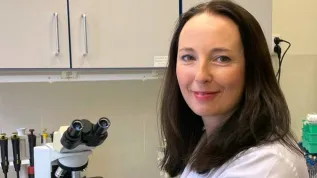
An innovative endoscope with an extended range, intended for the diagnosis and treatment of the entire digestive system, is being developed by scientists at the Faculty of Mechanical Engineering, Lodz University of Technology.
The robot will move in the patient's body with a "snake-like" movement, which will allow it to reach any place. It will be equipped with a camera and a work tube for inserting surgical instruments - says the head of the project, Dr. Łukasz Frącczak from the Institute of Machine Tools and Production Engineering, Lodz University of Technology.
The endoscope with an extended range is expected to answer the needs of surgeons who have problems with reaching specific affected areas within the digestive system.
"That is why they asked us to develop a device that would allow them to diagnose the entire digestive system, as well as to deliver a tool directly to the affected area. For example, it will allow to sample tissues for testing or deliver drugs directly to affected areas" - Dr. Łukasz Frącczak explains.
In comparison with other similar solutions, the device from Łódź will be based on the use of artificial lateral muscles patented by Lodz University of Technology researchers. "This allows for sufficient miniaturization to enable the insertion of the device directly into the human body" - the scientist says.
The endoscope will be 6 meters long and about 13 mm in diameter, allowing to diagnose the entire digestive system. "We are also considering a shorter, about 3-4 m long version, so that it could be introduced from various parts of the body and still be able to diagnose the entire digestive system" - he emphasises.
The device will to use a "snake-like" movement. "This solution will reduce the stress on the intestinal walls and the risk of damaging them, while offering the possibility of deeper insertion of the endoscope" - explains Dr. Frącczak.
The device will also have a special "work tube" that will allow to introduce additional tools into the body, for example instruments for tissue extraction and a camera that will capture and transmit a direct image from the patient's body.
"An additional idea is the possibility of illumination with various types of lights, thanks to which normally invisible diseased tissues, for example those affected by inflammation, will become more visible. There are a lot of additional possibilities that can be used in this robot" - the inventor believes.
The project is financed by the "Leader" programme of the National Centre for Research and Development. Its completion is expected by the end of 2019. By that time, the scientists from Łódź plan to create a technology demonstrator that they want to implement directly into the industry.
"Clinical trials will still be needed and that unfortunately extends this time, so our device will probably be available for physicians in 3-4 years" - concludes Dr. Łukasz Frącczak. (PAP)
PAP - Science in Poland
szu/ ekr/ kap/
tr. RL













